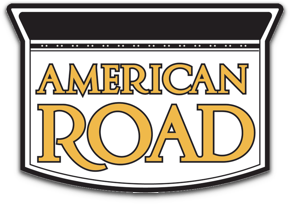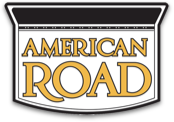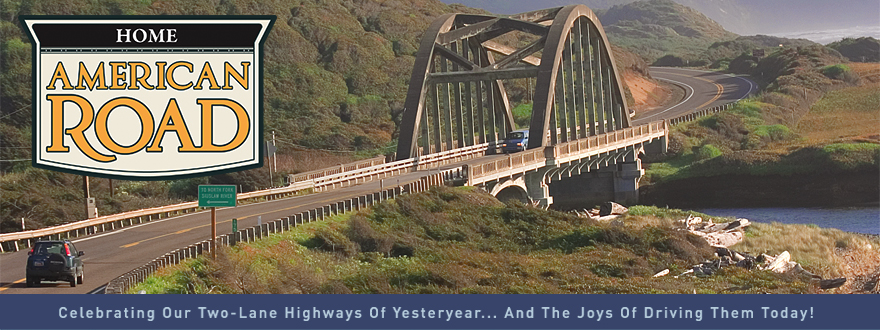-
Posts
196 -
Joined
-
Last visited
Content Type
Profiles
Forums
Gallery
Blogs
Calendar
Everything posted by Steve_Colby
-
Congratulations!
-
Great neon pix!
-

An Original Section Of The Old Cumberland Road
Steve_Colby replied to Steve_Colby's topic in National Road / U.S. 40
Denny, I liked your National Road trip report. I just wish I could have pointed out some more points of interest. ~Steve -

An Original Section Of The Old Cumberland Road
Steve_Colby replied to Steve_Colby's topic in National Road / U.S. 40
Thanks Dave. I don't know if I've listed this before but DavidRumsey.com has a zillion maps and there all free and downloadable. Steve -

An Original Section Of The Old Cumberland Road
Steve_Colby replied to Steve_Colby's topic in National Road / U.S. 40
Dave, I've got the Historic Topos in my places but I don't see anyway to choose a specific date. ~Steve -

An Original Section Of The Old Cumberland Road
Steve_Colby replied to Steve_Colby's topic in National Road / U.S. 40
Dave, I'm still not getting the option of USGS map dates on Google Earth. Steve -
Very cool ... and sad. Steve
-

An Original Section Of The Old Cumberland Road
Steve_Colby replied to Steve_Colby's topic in National Road / U.S. 40
Thanks, Dave. I finally got it. Steve -

An Original Section Of The Old Cumberland Road
Steve_Colby replied to Steve_Colby's topic in National Road / U.S. 40
Dave, My old brain just has a hard time with this new technology. I went to the page you indicated, and found Map Tech was the provider or maps of my area. Unfortunately, none of the hyperlinks appear in those map listings. I'm still lost. By the way, I'm using Dragon to write this reply. Steve -
In the heyday of Maryland road renovation, circa 1920s 30s, they would widen roads by adding a concrete shoulders to the side. The picture below shows the process. ~ Steve
-

An Original Section Of The Old Cumberland Road
Steve_Colby replied to Steve_Colby's topic in National Road / U.S. 40
Dave, I was unaware of the overlay. I tied to figure out how to access it without success, what do I do? ~Steve -

An Original Section Of The Old Cumberland Road
Steve_Colby replied to Steve_Colby's topic in National Road / U.S. 40
Approx. location (within 50 feet or so)39.64058, -78.81739 -

An Original Section Of The Old Cumberland Road
Steve_Colby replied to Steve_Colby's topic in National Road / U.S. 40
As befitting a spring culvert, there is a wall in the back. -
She was a beauty!
-

An Original Section Of The Old Cumberland Road
Steve_Colby replied to Steve_Colby's topic in National Road / U.S. 40
Believe it or not, we have repeatedly tried to get some kind of historical recognition for the culverts without success. -

An Original Section Of The Old Cumberland Road
Steve_Colby replied to Steve_Colby's topic in National Road / U.S. 40
Just to the west of the first culvert is a second. Most of it has been buried and hopefully, preserved. The second photo shows the remains of the retaining wall on the right side of this culvert. Both culverts have short sections of road atop them. Bob's section is to the west of the second culvert. ~Steve -

An Original Section Of The Old Cumberland Road
Steve_Colby replied to Steve_Colby's topic in National Road / U.S. 40
Dave, I too noticed the lack of growth as well as the new growth on the site. I believe the area must have cleared by the I-68 crews in the 1980s. -

An Original Section Of The Old Cumberland Road
Steve_Colby replied to Steve_Colby's topic in National Road / U.S. 40
Thia is one of my photos showing the spring culvert, with a short section of old road above. I've marked the location of I-68 and Braddock Road. The section of road Bob found was to the west and few hundred feet. -

An Original Section Of The Old Cumberland Road
Steve_Colby replied to Steve_Colby's topic in National Road / U.S. 40
Thanks, all fixed. -

An Original Section Of The Old Cumberland Road
Steve_Colby replied to Steve_Colby's topic in National Road / U.S. 40
The original section of road. (Just down for the old stone culvert.) Adjacent to actor Bill Macys's childhood home. SHA recently flattened two old railroad crossings (circa 1850s and later) in this area and Bob got these shots showing the 1930s road overlay on the old road. The stone culvert. Steve -

An Original Section Of The Old Cumberland Road
Steve_Colby posted a topic in National Road / U.S. 40
In an recent email conversation with Bob Bantz, noted authority on Braddock's Road, I was discussing a group of 1920-30s era SHA maps documenting changes to be made to Braddock Road/SRT 49. Braddock Road is the original route of the Cumberland Road before in was rerouted through the Narrows (1830s). The SHA map included a stone spring culvert which I'll certain was part of the original CR. This area is lodged between the backfill of I-68 and the 1930s and later Braddock Road. Bob examined the area carefully and spoke with local SHA officials. The general conclusion is that Bob has found an undisturbed section of the Cumberland Road dating to 1811-24. This section would not have been part of the 1830s rebuild of the road A search of the area with a metal detector turned up a few wagon nails, a piece of lead and a later coin. This could well be the only existing 1811-1830s section of road left. Steve -
Nice article and photos Jim. It's convenient to have a starter's shed at the outset of the trip. ~Steve
-
I was recently researching the earliest use of the National Road moniker to describe the road from Baltimore to Vandalia, IL. It appears the name first came in to limited use about 1820 following the completion of the Baltimore to Cumberland Turnpikes to the federal Cumberland Road. If common history is to be believed, this was a joyous occasion for the the Port of Baltimore. In fact, Baltimore and Philadelphia were embroiled in a war over who would control the trade coming from the Susquehanna River area of PA. Neither appeared to care a fig about trade with a newly opening West. Read more in the free Archive.org book: The Philadelphia-Baltimore Trade Rivalry, 1780-1860, John Weston Livingood, 1947. The book can be downloaded in PDF and uploaded to devices like KIndle. Steve



